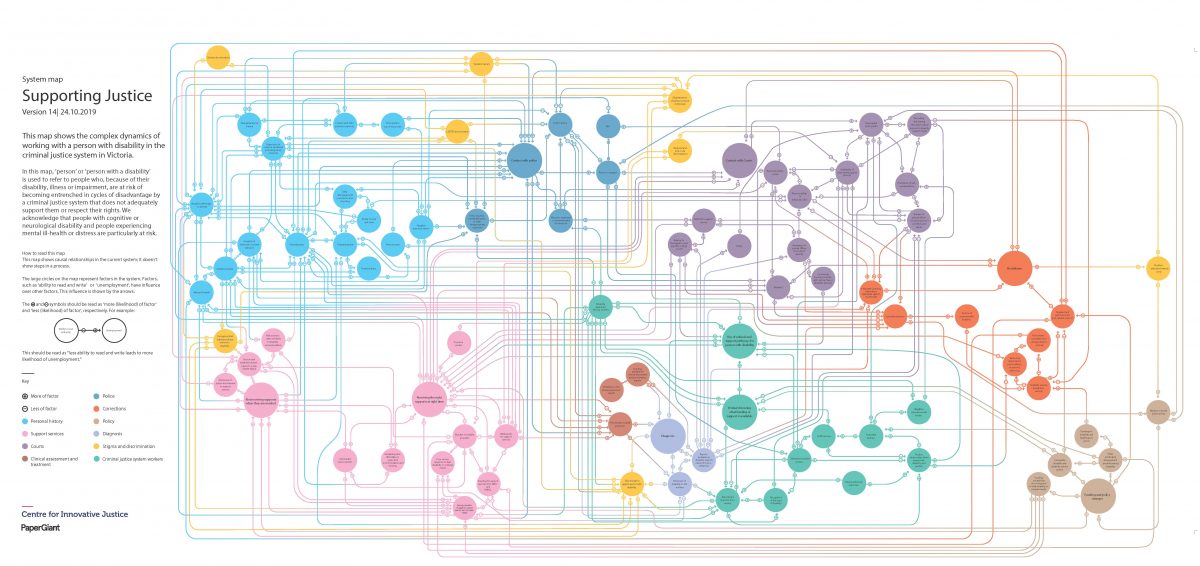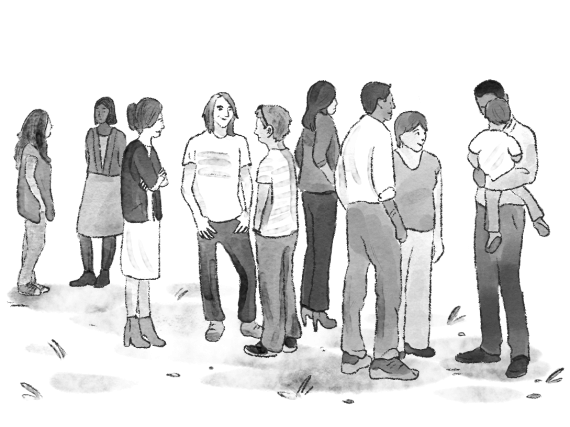Supporting Justice System Map
The Supporting Justice System Map is a visualisation of some of the factors that impact on people with disability in contact with the criminal justice system. The map was developed by the Centre for Innovative Justice, together with Paper Giant, as part of the early design work to create supportingjustice.net. Stakeholders from across the justice, disability and social service sectors contributed their time to consult on the creation of this resource.
What is a system map?
System maps are diagrams common to ‘systems practice’[1] that:
- trace the sequence and cause and effect through a situation or system
- show how situations, events and outcomes have more than one cause, and how looking at this can deepen understanding as to why an event or result happens, or why something recurs
- help us reach our own views about what’s happening in a system
The Supporting Justice System Map does not:
- show individual steps in a process
- show a future system state
- claim to be a complete or empirical representation of the entire system – there are many possible ways to represent any system
How to read the system map
The map has been designed to be viewed in person in large format. The CIJ have a hard copy that spans approximately 3 metres. It can be difficult to comprehend in soft or smaller contexts.
The map consists of a series of nodes which represent ‘factors’ in the system. These are connected by lines which show a relationship between the factors. The + and – symbols should be read as ‘more (likelihood) of a factor’ and ‘less (likelihood) of a factor’. The example below explains this.

Using the system map to tell stories of the system
The Supporting Justice system map serves a number of different purposes. It visualises some of the ways in which parts of the criminal justice system interact with a person with disability.
The system map has been created to identify opportunities for intervention that might lead to sustainable change. It is a working document that is constantly being updated and changed to respond to feedback as we build a more nuanced understanding of the complex system it represents.
The map has been designed to facilitate consultation about ways to reduce the overrepresentation of people with disability in the criminal justice system. These include:
- Identifying significant factors or relationships: for example, identifying factors that seem to be important; or identifying missing factors
- Identifying ‘feedback loops’: Looking at cycles within the map that reinforce positive or negative outcomes for system users – asking whether these cycles can be reinforced or disrupted
- Reflecting on how your organisation thinks about the operation of the system and its role in it
[1] ‘Systems practice’ is a way of thinking about complex problems that occur across large and interweaving systems. For more information see the Omidyar Systems Practice Workbook



